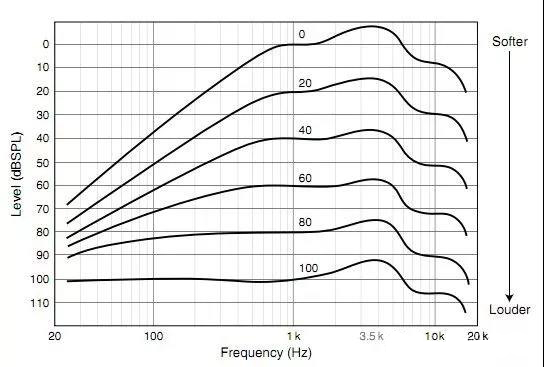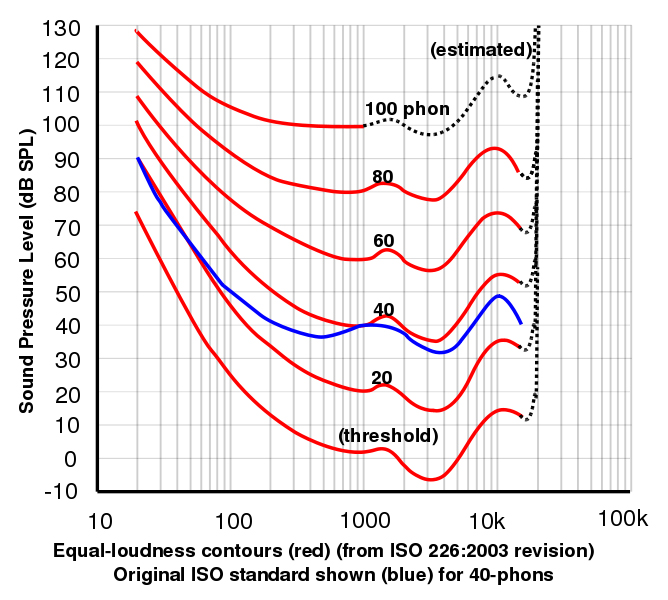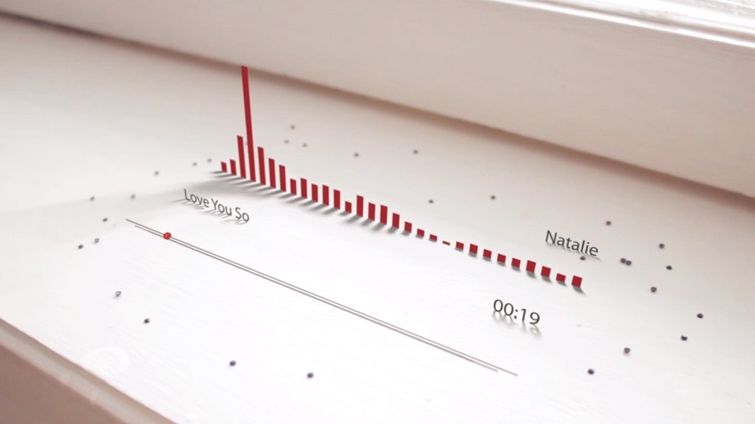Recently, someone raised an interesting question on the Internet: Do you have an illusion that if the sound is very small, it feels like a good headset is no different from a normal headset? And the same song, played with the same equipment, can the loud volume really restore more “details”? In this regard, today we will talk about the reasons for it.
The same device, the greater the volume, the stronger the ability to restore details?
This involves not only the playback capabilities of the equipment, but also the reception capabilities of the human ear. There is a very important experiment in the history of human perception of sound. The result of this experiment is called Equal-loudness Contour.
In 1933, two researchers at Bell Labs, Harvey Fletcher and W.A Munson, pioneered this type of experiment, which has since been tested and confirmed by others. In 2003, the International Organization for Standardization (ISO) published the ISO 226:2003 standard based on the results of various experiments in history. The following figure is the standard figure of ISO 226:2003 isophonic curve.
The left vertical axis represents sound pressure level (SPL), and the horizontal axis represents sound frequency.
The red line is the Phon value curve (Phon is the unit of Loudness),
The number marked above each red line is the Phon value of this curve.
As shown in the figure, for the human ear, a 1kHz sound at a sound pressure level of 20dBSPL can achieve a loudness of 20Phon. For a 100Hz sound to achieve the same loudness, its sound pressure level needs to reach 50dBSPL. The following conclusions can be drawn from the two figures:
1. Human beings are most sensitive to intermediate frequency signals. Under different sound pressure levels, intermediate frequency signals can generally be better perceived.
2. Human perception of low-frequency and high-frequency signals is greatly affected by the sound pressure level.
3. The greater the loudness, the flatter our perception of the signal frequency, that is, the greater the loudness, the easier it is for our ears to perceive the low and high frequencies of the signal.

In music, low frequencies give people a sense of strength, and high frequencies are related to brightness, clarity, and air. Therefore, the greater the loudness, the richer the details of the music of course.
As mentioned above, under the same audio and playback equipment, increasing the volume does make people feel more sound details, but this does not mean that the louder the better.
What is the most appropriate volume for listening to music with different dynamic ranges?
Drawing on the “Louder Perceived Better” section of the Mixing Audio book, the part is explained as follows:
1. It is related to the type of music and recording quality.
If the lower limit of the loudness of a person’s auditory discrimination ability is 20dB.
When he is listening to a piece of classical music with a dynamic range of 80dB, he needs to turn the volume to 100dB to be able to distinguish all the details. If you only turn on the volume of 60dB, then there are many details that are less than 20dB, and he can’t tell even if he hears it.
The dynamic range of another piece of popular music may be only 40dB, so when the volume is turned to 60dB, all the details can be distinguished.
Music with a wide dynamic range has a richer auditory level, and the contrast between fluctuations and emotions is also stronger, bringing more auditory pleasure and satisfaction. But the requirements for performance/singing and recording are also higher.
2. It is related to the system’s replay capability.
Not only headphones, but also audio sources and amps.
If it is a relatively inferior equipment, the distortion is large, and details will be lost regardless of the volume. It’s like looking at people through frosted glass. Although you can see the height or the color of the hair, you can’t see the facial features.
Rigorous and formal recording (compared to the current chaotic domestic so-called HIFI recording), playback with a good sound system, still requires a certain volume to fully reproduce the scene, the “certain volume” mentioned here is more than usual The accustomed volume should be louder.
Live recording is based on 0dB. If everyone’s audio equipment is old-fashioned, with meter heads and scales, the speaker combination is reasonable. Then, when playing peak music, all meters jump to about 0dB. Generally, the volume is too high in the home environment. If you can make proper sound absorption and sound insulation, even if the volume is lowered, you will hear a lot of details.
Post time: Jan-15-2021



